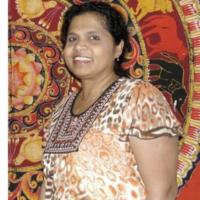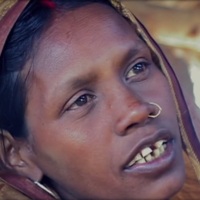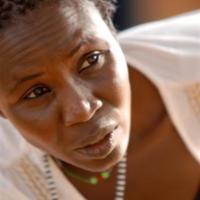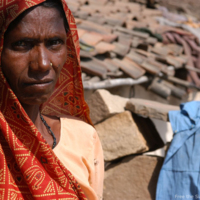
At that time, it was the summer holiday, so I assumed that if I worked for a few months then I could make more money and pay my school fee. In our family it was a hard time. That’s why I decided to go to China.
[On the way to China, police came on to Nang Shayi’s bus to check ID cards]
I did not understand what they were talking about, so I just stared at them. I didn’t know what to say – I closed my mouth and kept silent. Maybe the Chinese policeman assumed that something was wrong with me - I wasn’t normal. They skipped me and allowed me to pass.
[Nang Shay’s grandmother became suspicious when she hadn’t heard from her granddaughter]
The woman told my grandmother, ‘Oh, your granddaughter is a difficult person. That’s why we sent her to a place quite far from here’.
[…]
It looked like a wedding reception. There was an announcement delivering the new couple. The villagers came and also his relatives. [But] no official person like here… No documents, because I was from Myanmar and I didn’t have an ID card. So, there was no documentation for our marriage.
[…]
Four days later we arrived in Fugan. …Then I was locked up in the room. I was not allowed to use the phone. For a week I cried. I ate nothing. All I could do was pray. After that I realized that I had no way to choose anymore…I was there for four years
[…]
After a week they let me wander around. The problem was, in the village, they’d told everyone if I tried to run away, the villagers should call them. They gave them the phone number to call. In the downtown, there was only a bus station, so if anyone saw me on a bus, they would contact the family. There was no escape.
[…]
Because the first child was a boy, they treated us very well.
[Then Nang Shayi gave birth to a girl, her in-laws told her she could not stay in China after having two children, and could not obtain documentation for her children unless she was sterilized]
After the operation the Chinese man’s mother totally changed. She often yelled at me. They discriminated between the boy and the girl – even giving snacks. Especially his mother. Sometimes she yelled at me: “You Myanmar people are bullshit and son of a bitch! Because you are just sex workers and worthless persons!” She used all kinds of bad words. But the worst was the discrimination between the children. The husband was nice to me, but the problem was his mother. Sometimes she would physically attack me. I couldn’t stand such conditions any longer.
[Nang Shayi took her daughter and ran, making it to Myanmar]
I’m still young but I can’t have any more babies. For a woman, this looks like there is no hope for me.
Narrative provided by Human Rights Watch in their report “Give Us a Baby and We’ll Let You Go”: Trafficking of Kachin “Brides” from Myanmar to China









